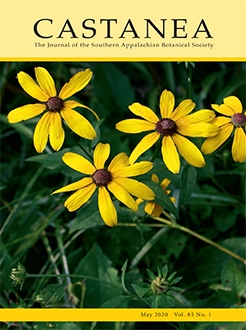We present the results of a floristic inventory and qualitative descriptions of the forest communities occurring in Malanaphy Springs State Preserve (MSSP), located in the Paleozoic Plateau of northeastern Iowa. Most of the 25.9-ha preserve is a mature mesic to dry-mesic deciduous forest community occurring on a steep slope adjacent to the Upper Iowa River. The preserve also contains a small floodplain forest as well as a small highly disturbed forest on the upland. We documented 422 plant taxa in our surveys, including 52 non-vascular taxa, 14 seedless vascular taxa, 3 gymnosperms, and 353 angiosperms. Eighty-seven percent of the vascular plant taxa are native, and 21% of the species have an Iowa coefficient of conservatism score of 7 or higher. Five species are listed by the Iowa Department of Natural Resources as endangered, threatened, or of special concern in the state. This survey provides critical baseline data needed to document future changes in the plant communities of MSSP. We conclude that this preserve is an important example of high-quality mesic deciduous forest communities in Iowa. We further conclude that the species diversity of the preserve is threatened by the cumulative impacts of habitat loss, high levels of deer herbivory, invasive species, nitrogen deposition, and climate change and that active management and strategic policy decisions will be needed to preserve native plant species diversity.
How to translate text using browser tools
22 January 2021
The Flora of a Mesic Forest Remnant in Iowa's Paleozoic Plateau: Malanaphy Springs State Preserve (Winneshiek County, Iowa)
Elizabeth A. Lynch,
William R. Norris,
Russell Kleinman,
Deborah Q. Lewis,
Brian Kurtz
ACCESS THE FULL ARTICLE

Castanea
Vol. 85 • No. 2
September 2020
Vol. 85 • No. 2
September 2020
biodiversity
Driftless Area
mesic hardwood forest
Paleozoic Plateau; plant conservation




